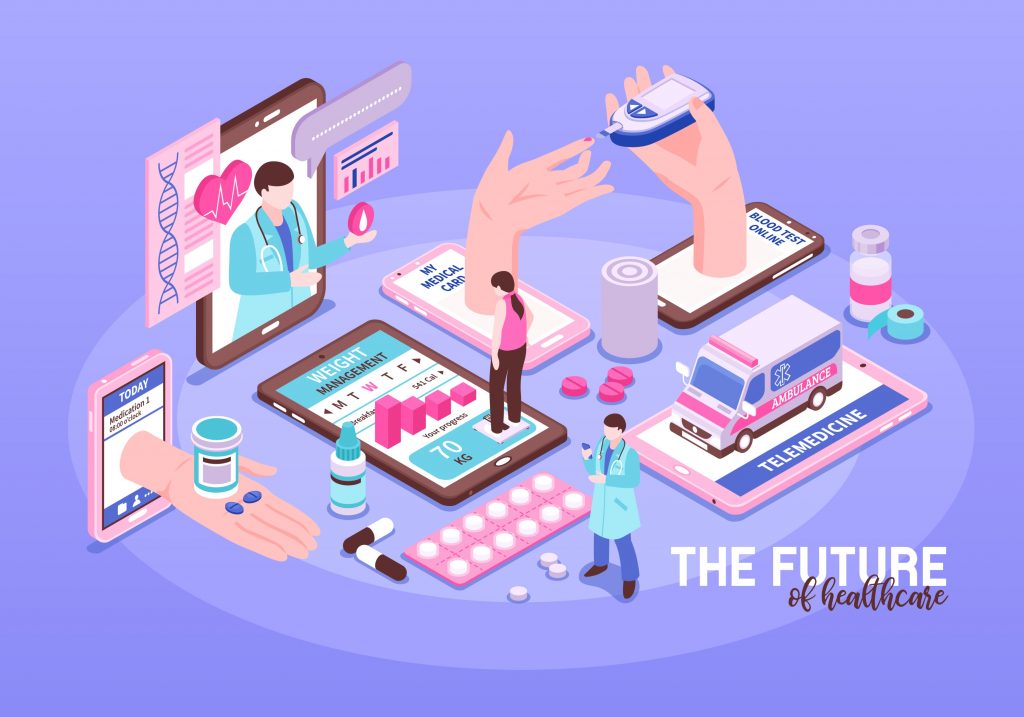In 2019, there were 77 million Indians suffering from diabetes. If the present trend continues, this number can rise up to134 million by 2045. According to the World Health Organization, diabetes is ninth among the top 10 diseases. It also contributes significantly to worldwide fatalities. Diabetes patients deserve the best treatment possible. But because there are so many of them, it is challenging to keep track of their biometric data, blood sugar levels, and insulin administration. Technology has stepped up in recent years with the introduction of remote patient monitoring (RPM) systems. It has allowed practitioners to give care at a higher level than ever.
Remote Patient Monitoring Implementation for Patients with Diabetes
A necessary part of implementing an RPM program is providing patients with the proper diabetes home monitoring equipment and software. This could include technology like an insulin delivery system, a wearable glucometer, and software that enables the communication between the pump and the monitor to determine how much insulin to dispense in Type I diabetic patients.
People with type II diabetes use digital blood glucose monitors to wirelessly record. The monitor sends this data of daily blood glucose levels to a protected, HIPAA-compliant website. After this data is acquired, it is examined for unfavourable trends and patterns that can indicate possible issues. The system alerts the proper healthcare provider in real time if a problem is found so they can follow up with the patients.
6 Benefits of Remote Patient Monitoring for Diabetic Patients
The use of an RPM solution has many advantages for diabetic patients as well as their doctors. A patient monitoring system, from the provider’s perspective, enables them to:
1. Compile Real-time Data
The RPM system provides information about the patient’s ongoing health. Before the advent of remote patient monitoring, clinicians would only learn whether a diabetic patient was non-compliant or in danger of problems after the patient encountered a serious issue. After necessitating an urgent visit or hospitalization. Patients frequently wait until the condition has worsened to the point where a significant medical intervention is necessary.
2. Offer Quick Possibilities for Intervention
When a patient monitoring system detects a potential danger factor, it raises an alarm. If it’s serious, it informs the necessary doctor. This reduces the likelihood that a diabetic patient would experience a serious disease. The doctor can respond right away from their current location. He can assess whether the circumstance necessitates a phone call or a scheduled in-person session.
3. Increase in Earnings with Remote Patient Monitoring
Remote patient monitoring gives healthcare professionals the chance to increase their reimbursement income. They also need to spend less time on overhead, personnel, and supplies needed for in-person visits. Increased staff productivity, decreased administrative costs, and enhanced workflow efficiencies all contribute to a practice’s improved ROI by boosting net patient income. This decreases billing errors and raises profitability.
4. Increase your Competitive Advantage
By luring new clients and boosting client retention, RPM systems enable suppliers to strengthen their competitive advantage. Increased referrals and income are benefits for practices that provide diabetic patients with convenient, consumer-driven treatment. When patients use technologically sophisticated diabetes home monitoring equipment, it can improve a healthcare provider’s reputation and position in the market.
5. Providing Medical Care to More People
Diabetes affects people from all socioeconomic backgrounds and income levels and is a non-discriminatory illness. Due to financial and transportation limitations, many patients are unable to attend frequent in-person doctor visits. Even patients in remote areas and those with limited mobility now have better access to care thanks to remote patient monitoring. It reduces many inconveniences to patients, and so do the expenses for parking, transportation, child care, and time off from work.
6. Improving the Doctor-Patient Relationship
Patients are more engaged and the patient-provider connection is improved when there are additional channels of contact available. Diabetic patients gain comfort from knowing their health is being tracked round-the-clock. Healthcare providers gain from better data to guide therapeutic judgment.
Conclusion
Remote monitoring services offer a number of benefits for patients and physicians. The patient, however, is at the centre of healthcare. As our country strives to provide everyone with improved quality treatment, technology offers the chance to impact healthcare in the future. Providers can relax knowing their patients always receive the finest treatment by using diabetes home monitoring devices that collect data and can send out real-time alerts.

Keep up the good work.